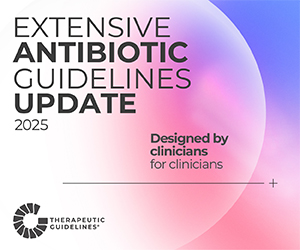The Australian Nursing and Midwifery Federation (ANMF) recently released a new position statement on clinical (reflective) supervision for nurses and midwives.
What is clinical (reflective) supervision for nurses and midwives?
According to the ANMF’s position statement, clinical (reflective) supervision, as a form of supported reflective practice, is often misunderstood and poorly defined. Nurses and midwives use a range of supervision types in their professional practice and therefore the term in clinical practice is often interpreted and applied in different ways.
In its position statement, which was reviewed and endorsed by its Federal Executive in August 2020, the ANMF adopts the following definition of clinical (reflective) supervision:
“A formally structured professional arrangement between a supervisor and one or more supervisees. It is a purposely constructed regular meeting that provides for critical reflection on the work issues brought to that space by the supervisee(s). It is a confidential relationship within the ethical and legal parameters of practice. Clinical supervision facilitates development of reflective practice and the professional skills of the supervisee(s) through increased awareness and understanding of the complex human and ethical issues within their workplace.”
Who utilises it?
According to the position statement, psychologists, psychiatrists, social workers, counsellors and mental health nurses have an extensive history of utilising clinical (reflective) supervision for professional practice.
It’s important to note that clinical (reflective) supervision differs from other forms of supervision such as line management, clinical teaching, preceptorship, mentoring/coaching and performance development, it adds.
Clinical (reflective) supervision is one form of reflective practice which aims to support nurses and midwives to develop knowledge, skills and competence across clinical, professional, interpersonal and relational domains that enhance the delivery of safe and effective care to healthcare consumers.
Participation in clinical (reflective) supervision is voluntary and not compulsory for employment.
Links to reflective practice
The position statement outlines that nationally, reflective practice is a core component of contemporary, professional nursing and midwifery practice under the NMBA’s registered nurse, enrolled nurse and midwife standards for practice.
It states that clinical (reflective) supervision utilises the relationship between the supervisor and supervisee to facilitate enhanced reflective practice processes. It should include a secure and trusting relationship, with regular supervisor sessions essential. There must be time allowed for personal reflection and careful attention to reactions and emotions that may be induced.
Further, the supervisor must be able to listen attentively, allow space for reflection and discovery, as well as provide support and guidance as needed, to enable supervisees to gain greater insight and more fully explore the impact of certain work events or situations on their practice.
This develops not only the individual’s clinical knowledge and skills, but also their professional identity, self-awareness, resilience and emotional intelligence in the workplace. Ultimately, it informs and contributes to the care provided and the culture of the overall work environment, which helps address and prevent issues such as vicarious trauma and workplace bullying.
According to the position statement, clinical (reflective) supervision has been promoted as an important strategy to support all nurses and midwives, as well as a process to enhance patient care and promote ongoing professional development. Research has demonstrated it leads to positives outcomes for nurses and midwives’ professional discipline, growth and identify; improves competent best practice and positively contributes to recruitment and retention of staff.
Importantly, reflective practice, which is a critical component of clinical supervision, may form part of a nurse or midwife’s CPD, where appropriate.
It is the position of the ANMF that:
- Regular clinical (reflective) supervision should be available to nurses and midwives during protected work time, including for those employed part-time or casually.
- Best practice clinical (reflective) supervision incorporates the following elements:
- A trusting alliance where the supervisory relationship is underpinned by trust and confidentiality. Direct line managers should not provide it.
- A conducive environment that is private and ideally away from the supervisee’s work/clinical area.
- The supervisor should, where possible, be chosen by the supervisee and clinical (reflective) supervision should be provided by professionals who have undertaken specific training and education in this area.
- A jointly approved agreement established by the supervisor and supervisee which outlines responsibilities, roles and expectations, including clear structures on length and frequency of meetings, boundaries and goals.
- Regular evaluation of the trusting alliance and agreement undertaken.
- Clinical (reflective) supervision models should be implemented at every level of the nursing and midwifery profession and training should be made available to all involved.
- Organisations should commit to the professional development of nurses and midwives by supporting clinical (reflective) supervision.
- Clinical (reflective) supervision should be embedded in healthcare organisational policies and protocols reflecting a culture that values learning, continuing quality improvement, and the health and wellbeing of employees.
- Organisations should demonstrate leadership in implementing clinical (reflective) supervision by every level of the healthcare team participating.
- Governments must support nurses and midwives to access clinical (reflective) supervision, which in turn translates to improved healthcare services, consumer access to quality care and retention and development of the nursing and midwifery workforce.
- Professional nursing and midwifery organisations and healthcare services need to work together to advocate for nurses and midwives to access clinical (reflective) supervision by influencing government policies and priorities.
- Ongoing research should be undertaken to continually examine the role and impact of clinical (reflective) supervision in nursing and midwifery.
In an interview with the ANMJ last year, clinical supervision educator Julie Sharrock described the reflective, collaborative practice as a professional relationship that has trust at its core.
“To implement clinical supervision successfully in health systems, we need to have organisational support for it,” she said.
“We need to have support for people to attend training, to become supervisors and to attend their supervision. All supervisors should have regular supervision as well with access to refresher training because at the moment in Australia we have no regulation or accreditation courses and we have no process across the nation so that organisations have an accredited process for supervisors and we also don’t have a standard that a supervisor has to meet in order to call themselves a supervisor.”
To read the ANMF’s full Clinical (Reflective) Supervision for Nurses and Midwives position statement click here.








